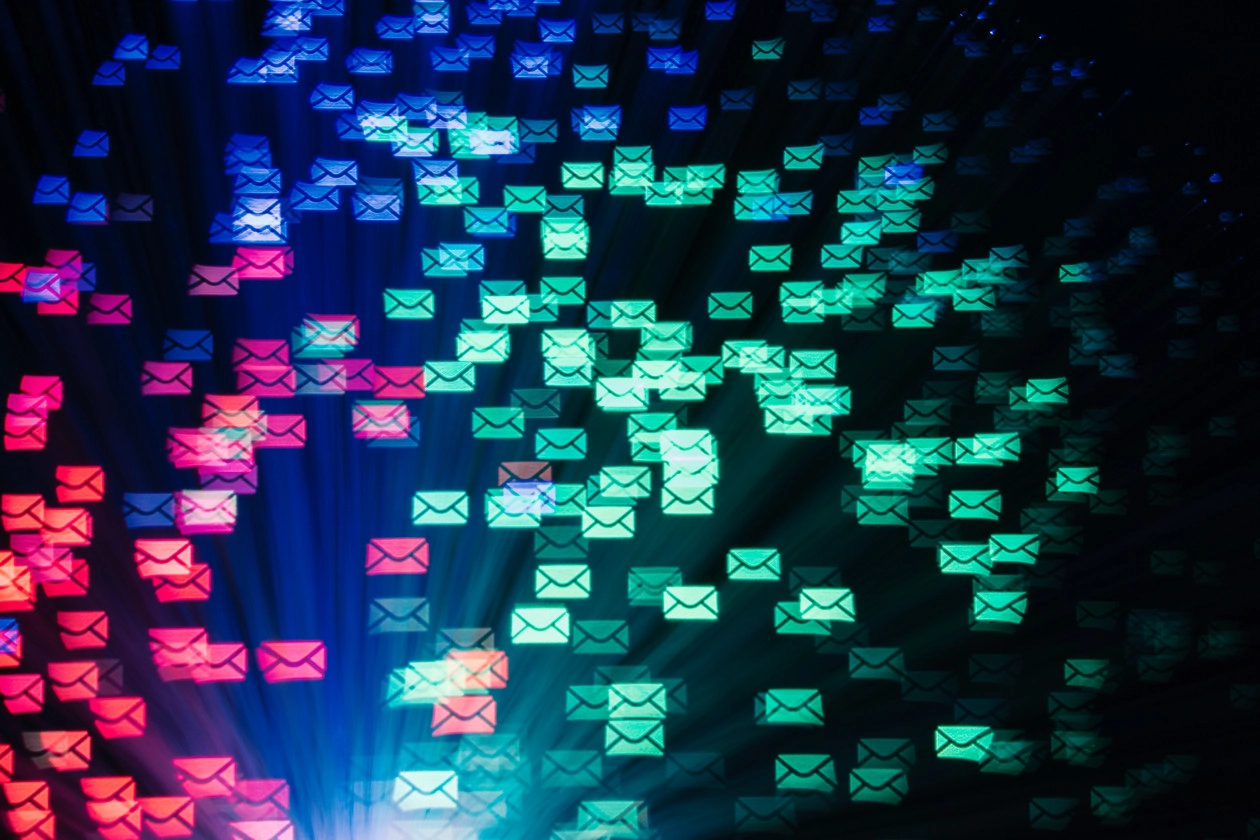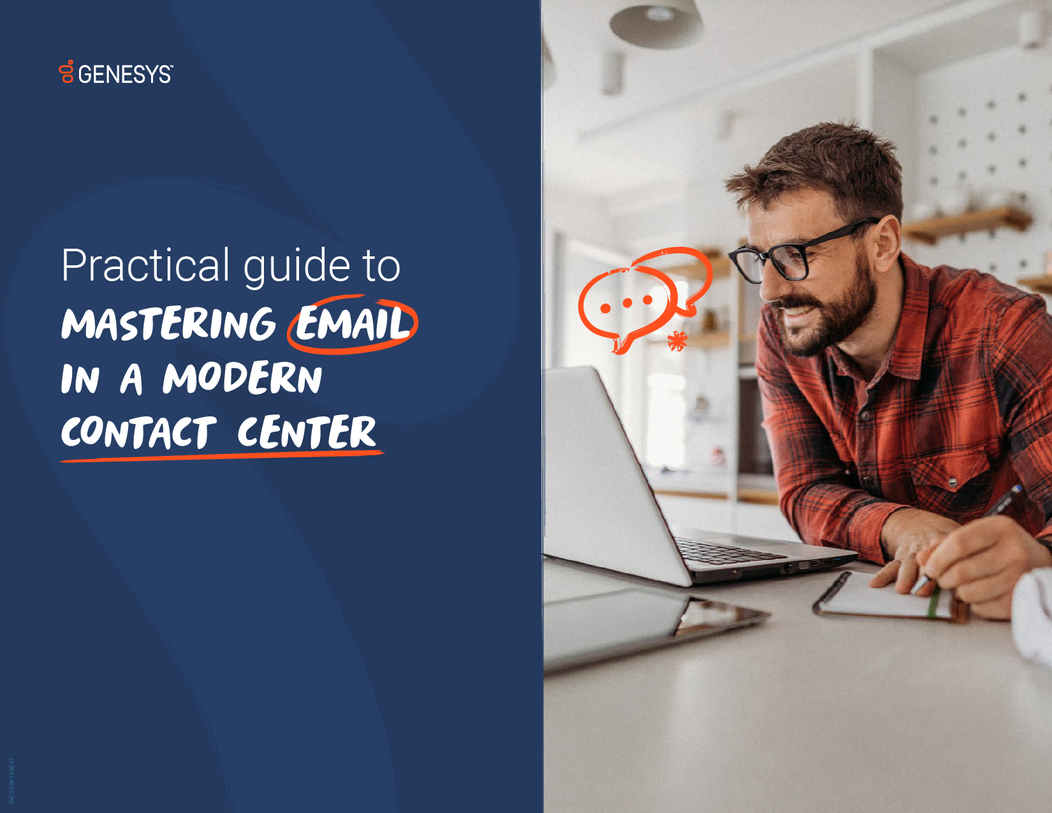Your Genesys Blog Subscription has been confirmed!
Please add genesys@email.genesys.com to your safe sender list to ensure you receive the weekly blog notifications.
Subscribe to our free newsletter and get blog updates in your inbox
Don't Show This Again.

Email is likely already part of your contact center’s communication strategy. But are you truly making the most out of it?
With more contact centers embracing new digital channels, email might feel old-fashioned or outdated. Don’t be fooled, though. Your customers don’t see email as a legacy medium. And we’re all still sending email in large volumes.
The “State of customer experience” report found that 63% of consumers preferred to interact with companies via email in 2021, up from 54% in 2017. Consumers also are more satisfied with email as a customer experience (CX) channel (33%) than with newer channels like SMS/text (30%) or chatbots (29%).
Email as a support channel offers distinctive benefits over other channels, including convenience and accessibility. The entire interaction remains on the customers’ terms. There’s no need to wait on hold or interact with a live agent. And there’s a record of the entire conversation that the customer can access at any time.
Plus, it’s the channel we use the most on a day-to-day basis — either for personal or professional communication.
But what about growth? Is email use on its way out? Not even close.
Daily email users are expected to climb from 4 billion in 2021 to 4.6 billion by 2025. The global email marketing market — valued at $7.5 billion in 2020 — is projected to increase to $17.9 billion by 2027.
And, if used correctly in customer service, email can generate $42 for every $1 spent, making it one of the most ROI-proven outreach options available.

Email might be part of your contact center strategy for CX. But are you making the most of it?
Not only has email proven its worth and reliability, but healthy signs of growth confirm its a popular channel for interacting with brands. When integrated strategically into the customer journey, it remains one of your contact center’s most powerful means of communication. And it’s an important part of delivering a modern, exceptional customer experience.
As new and better email tools have emerged, knowing how to navigate email properly, including integrating it alongside newer digital channels and artificial intelligence (AI), could give you the competitive edge you need to deliver great CX.
It’s time to refresh your customer service email strategy with these helpful tips and best practices.
Establish the parameters of the conversation: Customers only want a single relationship with brands, so establish just one email address for your brand. If you already have several public-facing email accounts, consolidate them into one centralized inbox.
Define roles and responsibilities: Implement a strategic communication approach by defining the roles and responsibilities across business units. Then decide which team will manage the email account — and how.
Plan ahead and create processes: To ensure a consistent experience with your brand, establish clear email customer service best practices. These should include routing emails to the right skilled resources according to time-to-respond expectations and context of the customer’s situation. You should also offer dashboards for sorting, filtering, arranging and prioritizing messages.
Know your customers: Determine how many emails customers prefer to receive from your company in a week and set priorities around that. Or, let them manage frequency through a preference center and always allow them to easily unsubscribe.
Know your limitations: Only use common attachments formats like JPEGs and PDFs, keeping them each under 2 MB and under 10 MB for all in a single email.
Enable employees to constantly improve: Equip your employees for success with plenty of performance tips, shortcuts and visibility. Be sure to give them easy access to canned responses for common questions. And offer dashboards for sorting, filtering, arranging and prioritizing messages.
Optimize for mobile: The majority of email opens are from mobile devices, but nearly one in five email campaigns aren’t optimized for mobile devices.
Stand out in the inbox: Snappy subject lines and email with valuable, helpful content will increase engagement and click-through rates.
Set your goals: Different from voice, create new benchmarks for productivity and financial indicators — especially service, sales, marketing and employee KPIs — that best serve your email goals. Be sure backend data is in place to capture performance metrics.
Measure your results: Evaluate your performance against the KPIs you defined to determine what you’re doing well and where you need to adjust. This includes checking in with employees to see where they need more support.
These best practices are just the beginning. They lay the foundation for what comes next: a more data-driven and automated strategy that fully leverages AI for your contact center.
For example, advanced tools can enhance your email outreach with automation. You could blend email with other channels to give agents real-time access to customer engagement history and preferences. You also could set auto-responses to engage thousands of customers at once with outbound email campaigns.
Email might not be an exciting new technology, but it is a field-tested and ROI-proven workhorse that consistently produces the digital experience people prefer. A well-written email that’s optimized for the customer journey, creates a more positive customer experience. It elevates customer satisfaction to levels that can surpass even the latest digital channels.
To make sure you’re getting the most out of your email strategy, check out our “Practical guide to mastering email in a modern contact center.” You’ll get a refresher on the basics as well as some advanced steps to fully maximize your customer service email strategy across the entire customer lifecycle.
Subscribe to our free newsletter and get blog updates in your inbox.